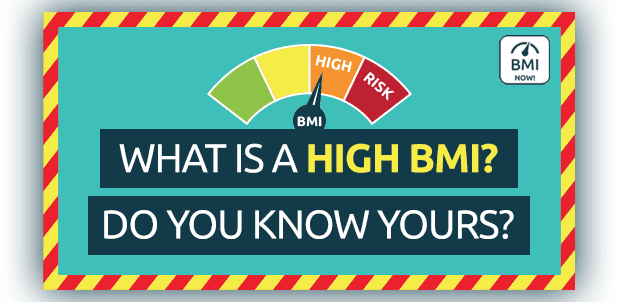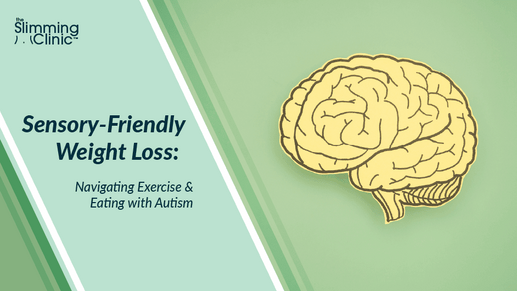5 Tips to Lower Your BMI
How to lower your BMI
BMI (Body Mass Index) is a term commonly used by professionals when looking at an individual’s body fat. Measured by using a person's body mass and height, BMI can be a good indicator as to whether someone’s weight is in healthy proportion to their height. Knowing your BMI is important as it can ultimately help in determining and preventing health risks.
Although some people may know their BMI from the top of their heads, more often than not it remains a mystery. Taking a trip to your GP to find out your BMI is no longer necessary with a range of online tools readily available. A BMI calculator is a great and efficient tool to use, which calculates a person’s body mass index, without having to leave the house or pay a penny. Use our BMI calculator to get your BMI results.
So now that you’ve calculated your BMI and have the results, you may be thinking… what do these numbers mean?
- Less than 18.5 = Underweight
- Between 18.5 and 24.9 = Average weight
- Between 25 and 29.9 = Overweight
- 30 and above = Obese
As the numbers above indicate, figures between 18.5 and 24.9 are considered ‘normal’ weight, whilst anything outside of this range can be cause for concern. If your number is showing above 25, there are simple changes that can be made to your daily life, which can aid in lowering your BMI. Steps on learning how to lower BMI can be found below. Take a look at our BMI chart as well for more info.
1. Change Your Diet
As simple as it may sound, implementing a healthy and nutritious diet will support you in lowering your body mass index.
A sustainable and healthy diet should include plenty of fruit, vegetables and lean meats/meat alternatives. By replacing starchy foods with whole grain options is a great example of making small attainable swaps to your shopping list; which as a result, will lower BMI.
It goes without saying that sugary food and drinks are a no go! Cereals, energy drinks and even fruit-flavoured yoghurts have high sugar content. It’s worth noting that if something is described as ‘low fat’, it could in fact be very high in sugar. Checking the packaging labels of products will give you a better insight into which foods have higher sugar levels than others.
Lastly, make fibre your best friend! Not only is it a great source of energy, but it also makes us feel fuller, which eradicates unnecessary snacking between meals. Fibre is also known to help digestion, which is a plus. Some examples of foods high in fibre are beans, broccoli, berries and apples (to name a few).
2. Calorie Deficit
According to the NHS, the recommended daily calorie intake is 2,000 a day for women and 2,500 for men. Decreasing the amount of calories consumed on a daily basis will inevitably aid weight loss and as a result, lower BMI.
By creating a food diary and tracking the amount of calories consumed with each meal, will ensure that you are eating within your recommended allowance and taking accountability. Most people also find this method helpful in truly understanding the calorie content of certain foods. This may result in you avoiding/limiting ingredients or increasing them. While it’s natural for your consumption to fluctuate day by day, the main key to succeeding is consistency.
3. Exercise
Along with a healthy diet, comes physical activity. Getting active can seem daunting, however it’s key to remember that weight loss is a marathon, not a sprint. Taking part in more physical activity will increase metabolism, decrease total body fat; inevitably lowering BMI.
Activities such as walking and jogging are great in improving cardiovascular health and to burn calories. It is recommended that adults get at least 30 minutes of moderate aerobic exercise 5 days a week; this may include swimming, cycling and rowing.
Many people don’t associate weight training with weight loss, however this is another great form of activity to lower BMI. Resistance training helps individuals burn fat by essentially gaining muscle. While it may seem surprising, it is true that building muscle burns more calories.
4. Set Targets
Starting the day with no clear plan as to when you’ll exercise or go food shopping can put a barrier between your present self and your future self. It is important to feel accountable and therefore by setting clear goals and targets each week is imperative. By scheduling in workouts during the week and by planning in a weekly shop will support your goals in wanting to lose weight and lower your BMI.
5. Consistency
Lastly, consistency is vital. Results do not happen overnight and a week of leading a healthy lifestyle will not lower your BMI straight away. Sticking to your plan and setting realistic goals will help to manage expectations. If a period of time has passed and you’re still struggling with staying motivated and on track, there are other forms of help to be sought.
Weight loss is not always easy and what has worked for you in the past, might not be working now. That is why the best online weight loss programmes are built around you and your needs and lifestyle – whatever you need to get you to your goal.

Make this year the year you achieve your goals
Check your BMI and Healthy goal weight
A good way to check if you are a healthy weight is to use the Body Mass Index (BMI) Calculator.

Healthy vs Unhealthy Cheeses

National Pet Day: Pet-Friendly Exercises to Boost Your Health (and...

Walking For Weight Loss

Sensory-Friendly Weight Loss: Navigating Exercise & Eating with Autism

Winter Exercise: Our Top Winter Activities For Weight Loss



